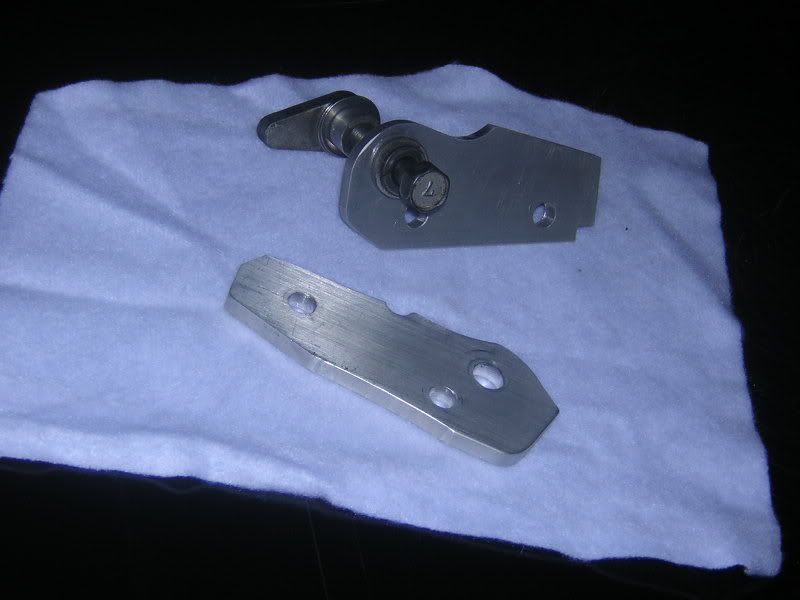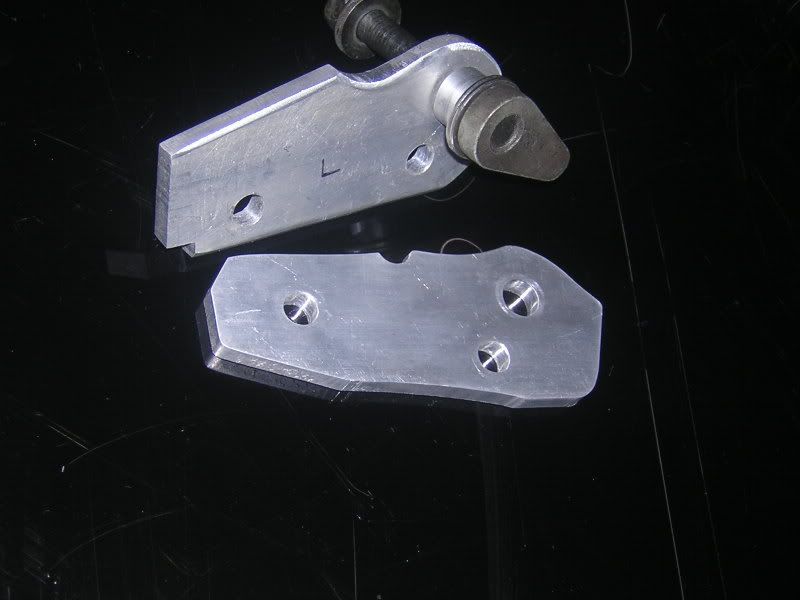Announcement
Collapse
No announcement yet.
help machining a beveled edge on alum flats
Collapse
X
-
Forum LongTimerCharter Member
GSResource Superstar
Past Site Supporter- May 2002
- 17921
- The only Henniker on earth
Wow, learn something new every day. I will not use my bench grinder for aluminum!Currently bikeless
'81 GS 1100EX - "Peace, by superior fire power."
'06 FZ1000 - "What we are dealing with here, is a COMPLETE lack of respect for the law."
I ride, therefore I am.... constantly buying new tires.
"Tell me what kind of an accident you are going to have, and I will tell you which helmet to wear." - Harry Hurt
-
 tejasmud
tejasmud
Shoot! 40 yrs old here, and I still learn every day.
Really, anything non-ferrous like aluminum, brass, copper, zinc...... not a good thing to grind on with a bench/wheel grinder without dressing..
I have had this pounded into my head from my elders since I was crawling...lol
It can be done, just need to dress the wheel repeatedly, which this will quickly reduce the life of the wheel.
Sort of like machining "Nitronic 50," going to go through some tools to do so.
Comment
-
 justin caise
justin caise
Excellent advice from all - even the dangerous stuff cause it makes me think.
I posted this question at three different websites, a sort of broadcasting I guess, and subsequently got more answers but a narrow range of ideas - I thought I'd go with the most common one…
http://www.bikerradiomagazine.com/forum/phpBB3/viewtopic.php?f=15&t=6391
http://www.thegsresources.com/_forum/showthread.php?p=998416#post998416
http://metalmeet.com/forum/showthread.php?p=149827#post149827
but those answers reminded me that I have an elec die grinder which came with a jig used to bevel a laminate counter (maybe it was granite?) I may try that even though it's kind of huge - but even better, I remembered that my piano rebuilder dad has a 1" wide elec belt sander! I'm in business.
The reason I really want to bevel these things is to go the extra mile as well as to occupy my self at work on the long sunny weekends while you bastages are out toolin around.
Great info about not grinding nonferrous metals on the common wheel.
Remind me to keep my distance from the bench grinder I used
to shape these babies way back when.
Surfing today yeilded more detailed info http://www.mmsonline.com/article.aspx?id=14516
Off to read about how to dress the wheel…
I'll clean these in a couple of weeks and post up pics.
[Jethro, you've changed! Well at least your avatar has ]
Last edited by Guest; 05-10-2009, 03:02 PM.
]
Last edited by Guest; 05-10-2009, 03:02 PM.
Comment
-
 Uruka
Uruka
The best method would be to through it on a CNC mill with a corner rounding tool or for flat bevels you could use a spot drill. You'd need to accurately measure the part and create a program for the machine, but they would come out perfect. You could probably take them to a community college with a machine shop and have a student do it for you for cheap. They should have the proper tooling, but if not then you can get HSS (high speed steel) tools fairly cheap, you don't need carbide for cutting aluminum.
Comment
-
I don't know why I didn't think of this before but to eliminate the danger of the 22,000 rpm a router spins, you could chuck the router bit in a drill press, set the speed to where you can deal with it, raise the table up to the bit & then feed the parts into the bit on the table. Just go easy on the pressure & get a feel for it. I'll bet I could do it easily & safely this way! Ray.
Ray.
Comment
-
Hell Ray; i do dat all da timeI don't know why I didn't think of this before but to eliminate the danger of the 22,000 rpm a router spins, you could chuck the router bit in a drill press, set the speed to where you can deal with it, raise the table up to the bit & then feed the parts into the bit on the table. Just go easy on the pressure & get a feel for it. I'll bet I could do it easily & safely this way! Ray.
Ray.
and you will be in business.
http://www.harborfreight.com/cpi/cta...emnumber=94276
Alum is soft, but unless the material is held firmly the bits will grab and fling the part. I have a large table top drill press and use a vice like the above.
Comment
-
I have a belt sander I put in the vise. 60 or 80 grit makes quick work for aluminum.
Originally posted by justin caise View PostAny ideas on how to bevel the edge of these curvey flat alum motor mounts I hacked out for my GS1000/GS750 project? Just an easy 45 degree on the edge is all I'm after.
All I currently have at my disposal is a drill press with a machinists vise and some assorted mills - or hand files of course. I tried to do some of it by hand but it got a little shoddy in the corners and curves. (Like the GS1000 used to do! )
)
Any advice is good advice. I'm drawing a blank.


thanks, JC
SUZUKI , There is no substitute
Comment
-
 DMorris
DMorris
I know this thread has been idle for a bit but I thought I would add that Dremel makes a router attachment for their high speed motors and lots of bits with all kinds of angles and curves to go with them.
If what is wanted is a small ( 1/16 to 3/16 ) bevel or round over, this might be the way to go for smaller parts that would be tough to work with bigger cutters and motors.
I would stick the part to a board with doubleback tape. That would free up both hands to guide the dremel router. The trick is to go easy on how much material is removed per pass.
Don
Thought I would also mention that beeswax will help keep your burr or rotary file from loading upLast edited by Guest; 06-11-2009, 04:45 PM.
Comment
-
Forum LongTimerCharter Member
GSResource Superstar
Past Site Supporter- May 2002
- 19856
- Toronto, Canada
 This is still work to be done, instead of riding.....
This is still work to be done, instead of riding.....
How about a simple tool choice, guaranteed to do the work well, and all it will take is a few minutes and a bit of patience.
Stay away from coarse grits when doing aluminum.
Use a small grit -high number belt to get the best results.
You can set the angle by adjusting the table when hard grinding, and then get a very clean surface by using the higher, unsupported part of the belt. .

Comment
-
 Roger P.
Roger P.
You need a silicon carbide wheel to grind aluminum, non-ferrous metals and carbides. The wheel breaks down quickly, keeping a sharp face on the grinding wheel. They powder away quickly, but do the job wonderfully. I have ground copper with these wheels quite successfully. There are die grinder burrs especially made for aluminum which have a coarse tooth pitch which don't load up and work very quickly, sometimes too quickly. If you use a drill and router bit, remember to feed the piece against the travel of the bit, not with it, otherwise the bit will grab it and try to throw it violently. It's called climb milling, and is very destructive if not carried out on a machine specifically designed to do this, in which case it is a very efficient milling technique.
I fit was me, I'd draw file it. As much as I hated that first few weeks of machine shop, I did learn to properly use a file, and can now do some fairly intricate work with one. Draw filing is a method where the file is held perpendicularly to the work piece and is drawn back and forth across the piece side to side. You can get some very smooth surfaces with this method, and some very accurate ones as well.
Comment
.png)
Comment